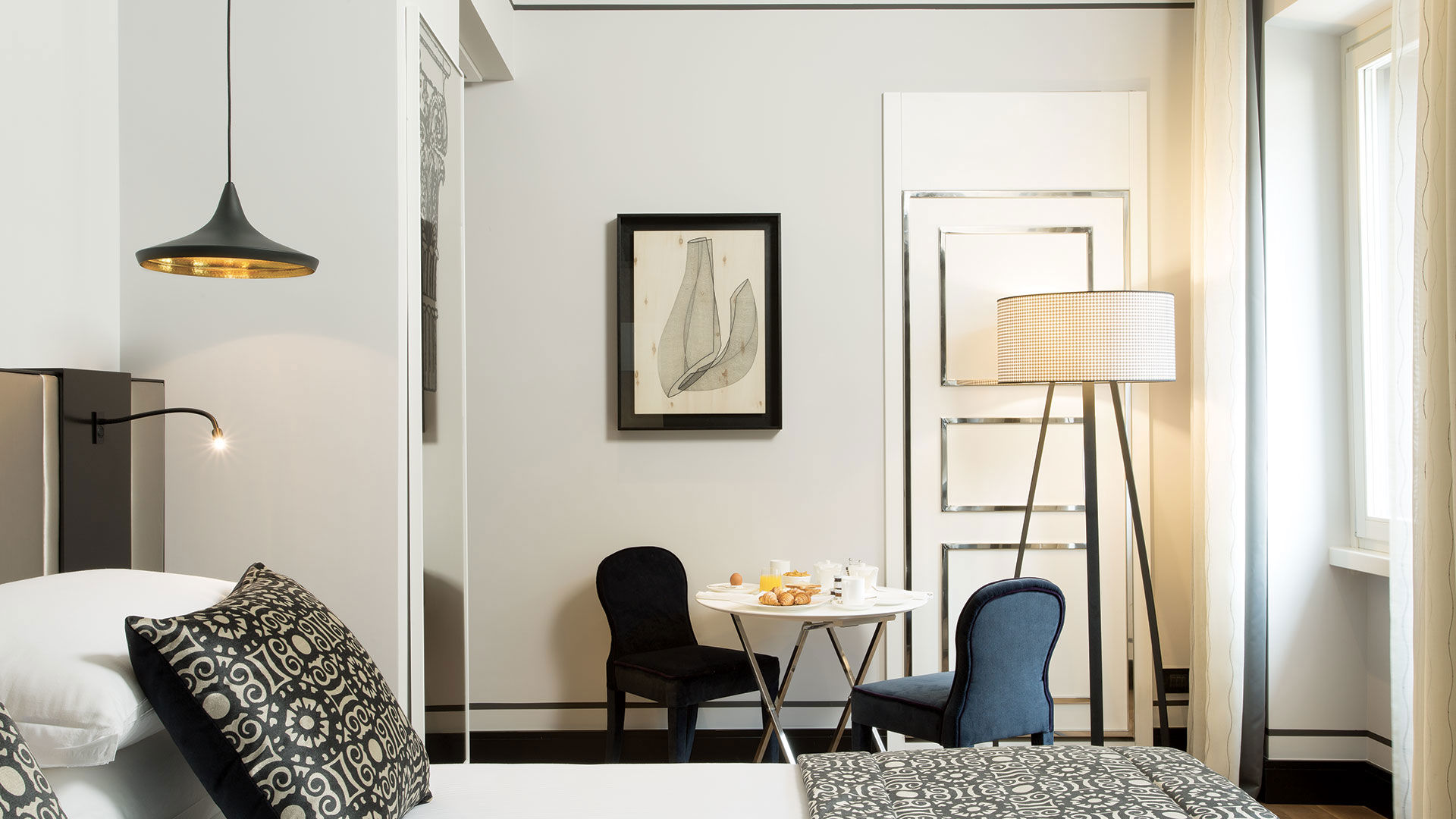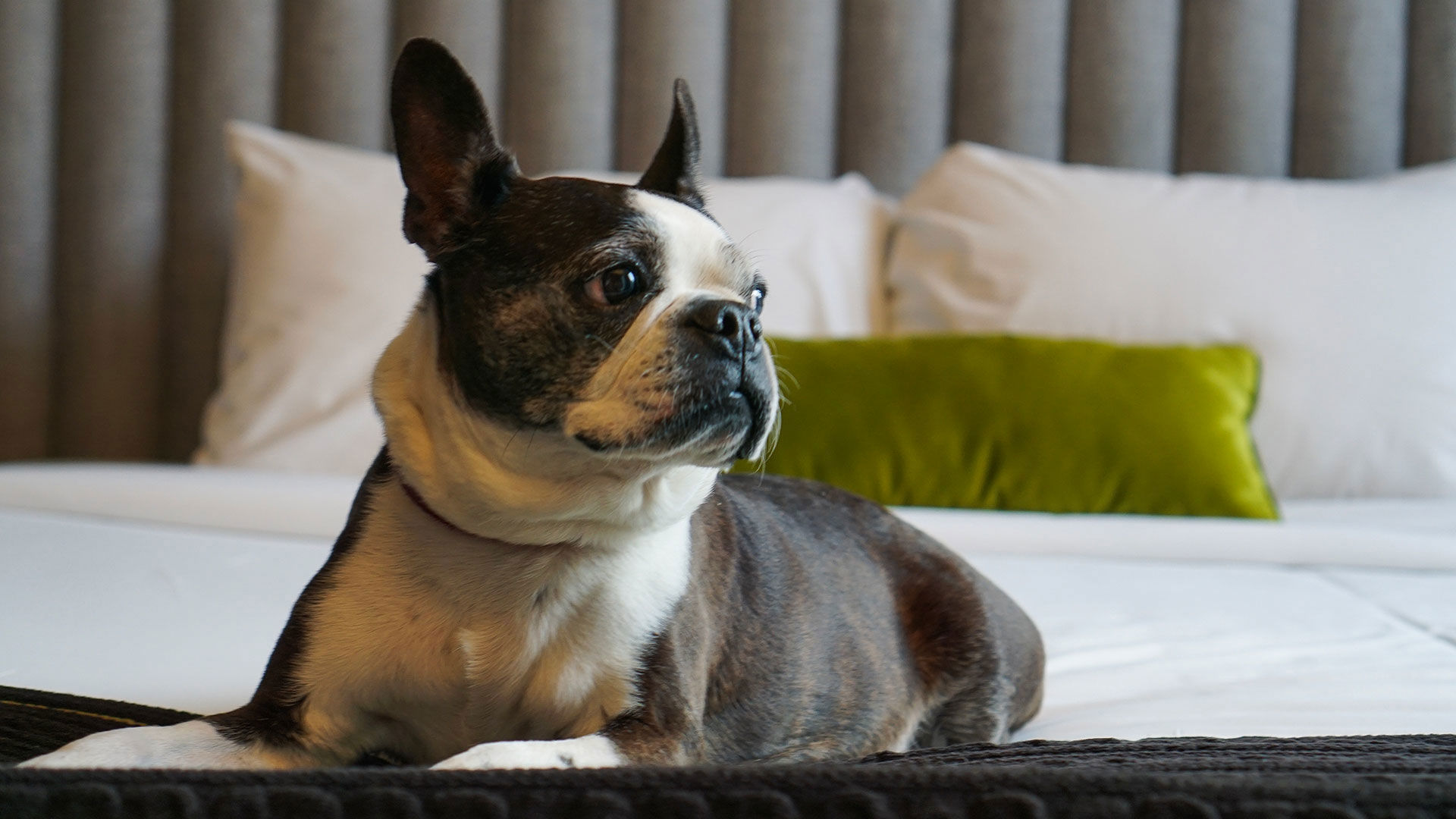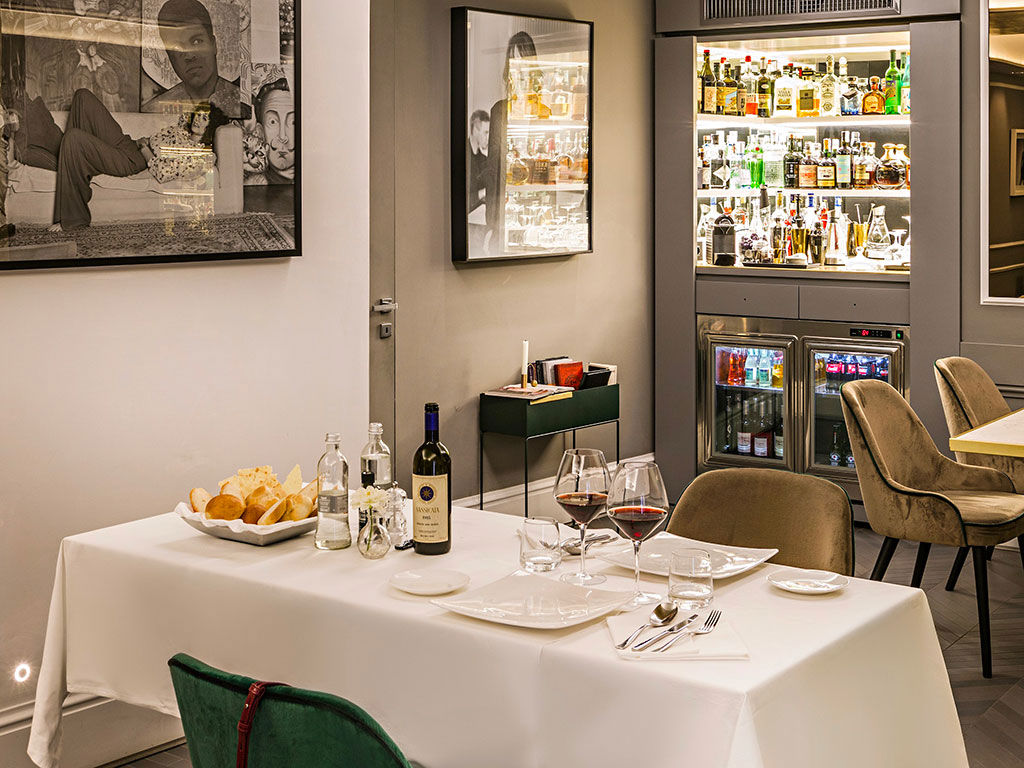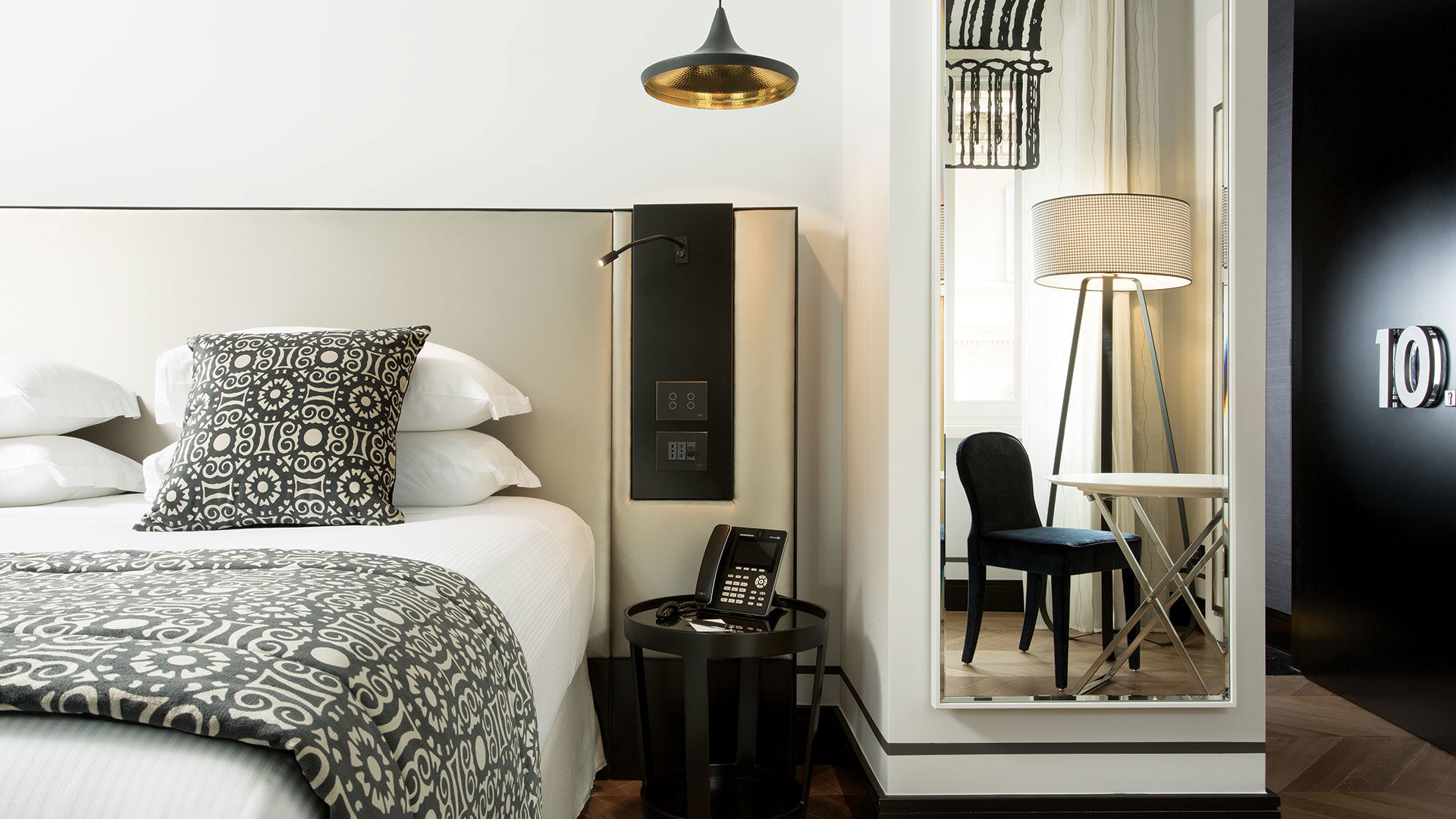



Corso 281 carries the spirit and soul of its owner Natalino Gisonna, an unconventional entrepreneur who runs his hotel as a passion, not as a business. The building which now houses Corso 281 used to be a bank. The elegant 18th century Palazzo takes up a whole block of Via del Corso, the main street that runs through central Rome, its stately exterior masking an interior of rooms and staircases that Natalino set about transforming into a 5 star luxury hotel. It was a slow process, involving careful research, hard work and long days and nights. Time and dedication saw Natalino bring his vision to life.
Corso 281 is a family-owned business which combines the service and comfort of a luxury hotel with genuine Italian kindness and hospitality. It is a luxury hotel which has been designed for all types of guest. Everyone who stays with us at Corso 281 becomes part of the family, and is always welcome to return.

All of our suites are furnished with a king-sized bed and the possibility of adding extra beds, providing the perfect solution for couples visiting Rome with young children. We take extra special care in ensuring that even the youngest guests are happy and looked after.

Our Suites are furnished in monochrome tones, with luxury fabrics, textiles and linens and offer all the modern amenities, including a 5G smartphone allowing unlimited international calls and internet service to keep you connected.
Discover our world, where timeless hospitality meets refined taste. From gourmet experiences to tailored services, every detail is crafted to elevate your stay in the Eternal City.

Coming from southern Italy where hospitality and warmth abound, Natalino Gisonna wants every guest to be welcomed like family and treated as a friend.

From concierge experiences to exceptional massages, our dedicated team ensures every moment of your stay is smooth, personal, and truly unforgettable.

Savor authentic Italian flavors reimagined with elegance. Our dining experiences invite you to taste Rome’s culinary soul in a setting of timeless charm.


Thanks to this commitment to running a sustainable hotel, Corso 281 has been certified with a Green Key recognition, an important international award which affirms owner Natalino Gisonna’s dedication to protecting the environment.


Discover the charm and elegance of our hotel through our photo gallery. Explore every detail and let yourself be inspired by the atmosphere that awaits you.